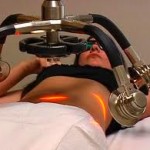
Hype and marketing aside, what are the actual study results which the FDA reviewed? The approval was based on a placebo-controlled, randomized, double-blind, multi-site clinical study evaluating 67 patients that went through the treatment protocol. The results showed an average inch loss reduction of 3.65 inches across the patient’s waist, hips, and thighs in two to three weeks. This clinical trial did not require the patients to be on a special diet or do a certain amount of exercise. What is particularly noteworthy about this study and approval is that it was done on a PMA application, not a 510K. Since there were no previous devices commercially available that performed non-surgical fat reduction on which to compare, Zerona had to undergo the review process from scratch. This type of review is a lot more critical and rigorous than if a comparative device was already FDA-approved. Review of the documents show Erchonia submitted the study results in the summer of 2008 and it took two years (and a lot of questions in between) before it was granted approval for safety and effectiveness.
One of the main reasons that skepticism exists with Zerona is that its mechanism of action is below the human threshold for perception. It emits a low-level, or cold, laser energy that causes no heat to build up and be felt on the skin. Because the laser light causes no visible effect on the skin and no pain, it appears incongruent with how we perceive lasers to work. After all, aren’t lasers bright streams of concentrated light that vaporize anything it hits? I don’t understand how cell phones work either, and I have tried to grasp the physics of them, but I have proof on a regular basis that they do.
Through a photochemical (not photoelectric or acoustic) process that is specific to fat cell walls, the laser energy make them leaky. With this very temporary leakiness, the lipids (fatty acids) come out making some fat cells completely collapse. If enough of that occurs, fat volume will be reduced to a modest degree. These loose fatty acids are picked up by the lymphatic system and passed through the liver, the body’s phenomenal filter system which breaks them down and eliminates them. (they are not recycled) This entire process can obviously be enhanced by conventional methods of weight loss including diet and exercise.
Very interestingly, in a completely different and independent study from last year, Erchnoia reported that Zerona had been shown to reduce the levels of the hunger-hormone, leptin, and lipoprotein (LDL). In a 22 patient pilot study. Zerona not only reduced circumferential inches following a two week treatment phase but also lowered patients’ leptin levels and reduced low-density lipoprotein numbers in over half of the participants in the study period. It should be noted that this was a pilot study and was not conducted in a more formal study fashion so these results should be viewed as interesting and promising but not as a scientific fact.
Dr. Barry Eppley
Indianapolis, Indiana


